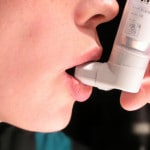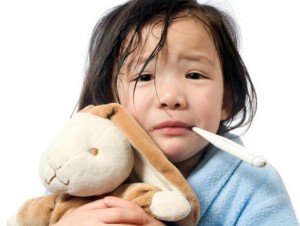
Asthma attacks may be triggered by a variety of different irritants, such as pollens, animal fur, house dust mites, exercise or infection. The muscles around the walls of the airways tighten, so that the airways become narrower. The lining of the airways become inflamed and swell, and there may be increased production of mucus or phlegm which can plug the airways, narrowing them further.

Treatment of asthma is aimed at two goals: relieving symptoms and preventing future symptoms and attacks. Often a daily (preventer) inhaler is used to control inflammation. In the event of an attack a ‘reliever’ inhaler helps to manage the symptoms. The most common reliever inhaler is salbutamol (Ventolin ™) and is blue. People with asthma should have a personal action plan, agreed with their GP or asthma nurse that includes information about the medicines they need to take, how to recognise when symptoms are getting worse, and what steps to take when they do so.
SIGNS AND SYMPTOMS
Coughing at rest
Wheezing sound from the chest at rest
Difficulty breathing, possibly with use of muscles in shoulders and upper body to help.
Chest tightness
More serious symptoms include:
Unable to talk, or to complete a full sentence
Exhaustion
Blue/white tinge around lips
Collapse
If these symptoms are present, call 999.
TREATMENT OF AN ACUTE ASTHMA ATTACK
Remain calm and reassuring
Encourage the patient to stand or sit upright, or leaning slightly forward, relax their shoulders and concentrate on breathing out
Help the patient to take their inhaler correctly. Children, particularly younger children, should use a spacer. Two puffs of inhaler through the spacer may be given every two minutes up to a maximum of ten puffs if required. If the child does not feel better at this stage, or if you are worried earlier, call 999.
If an ambulance has not arrived 10 minutes after the initial 10 puffs have been completed, and the child is still unwell, repeat the process.
If treatment is successful, and the patient feels better, they may resume normal activities.



